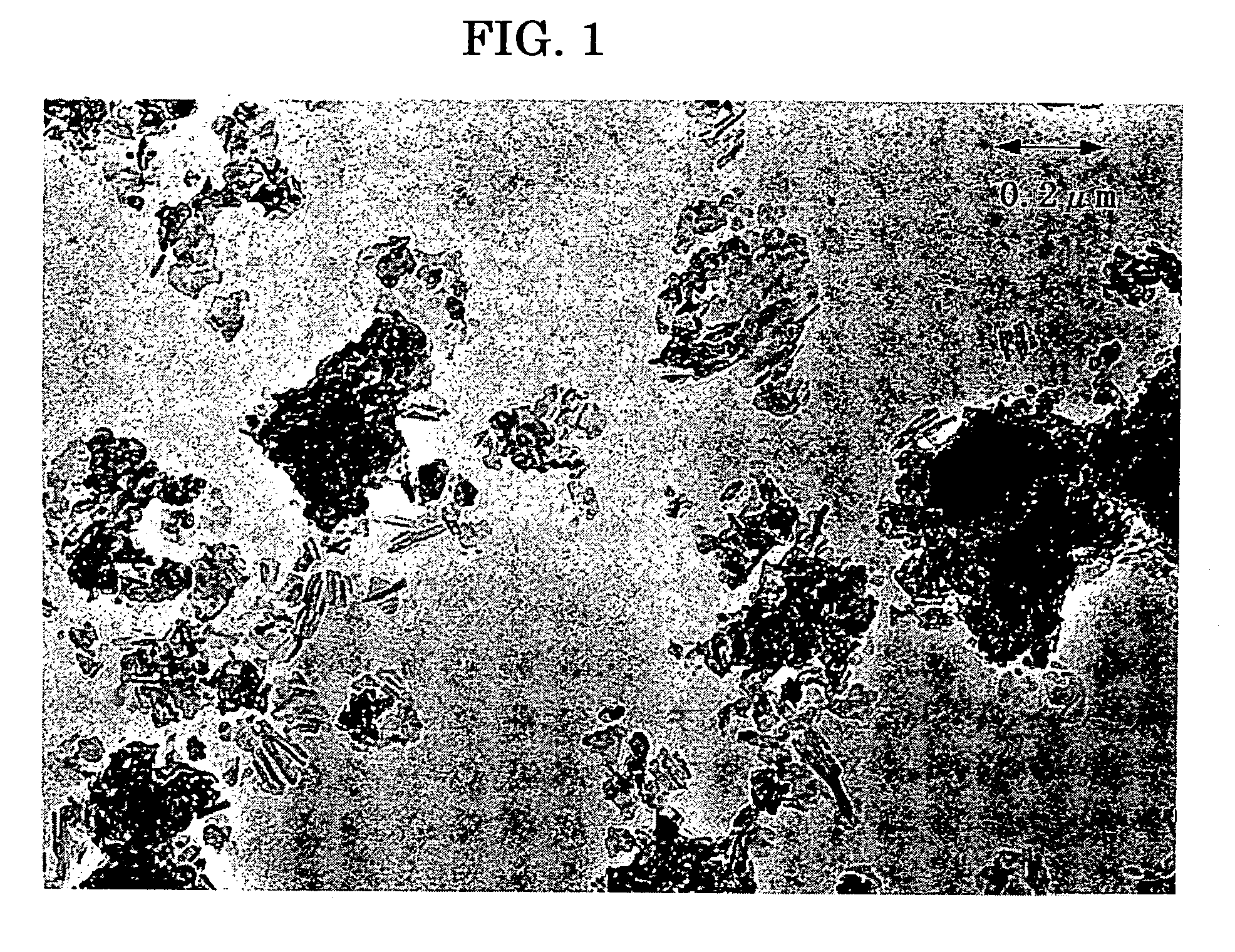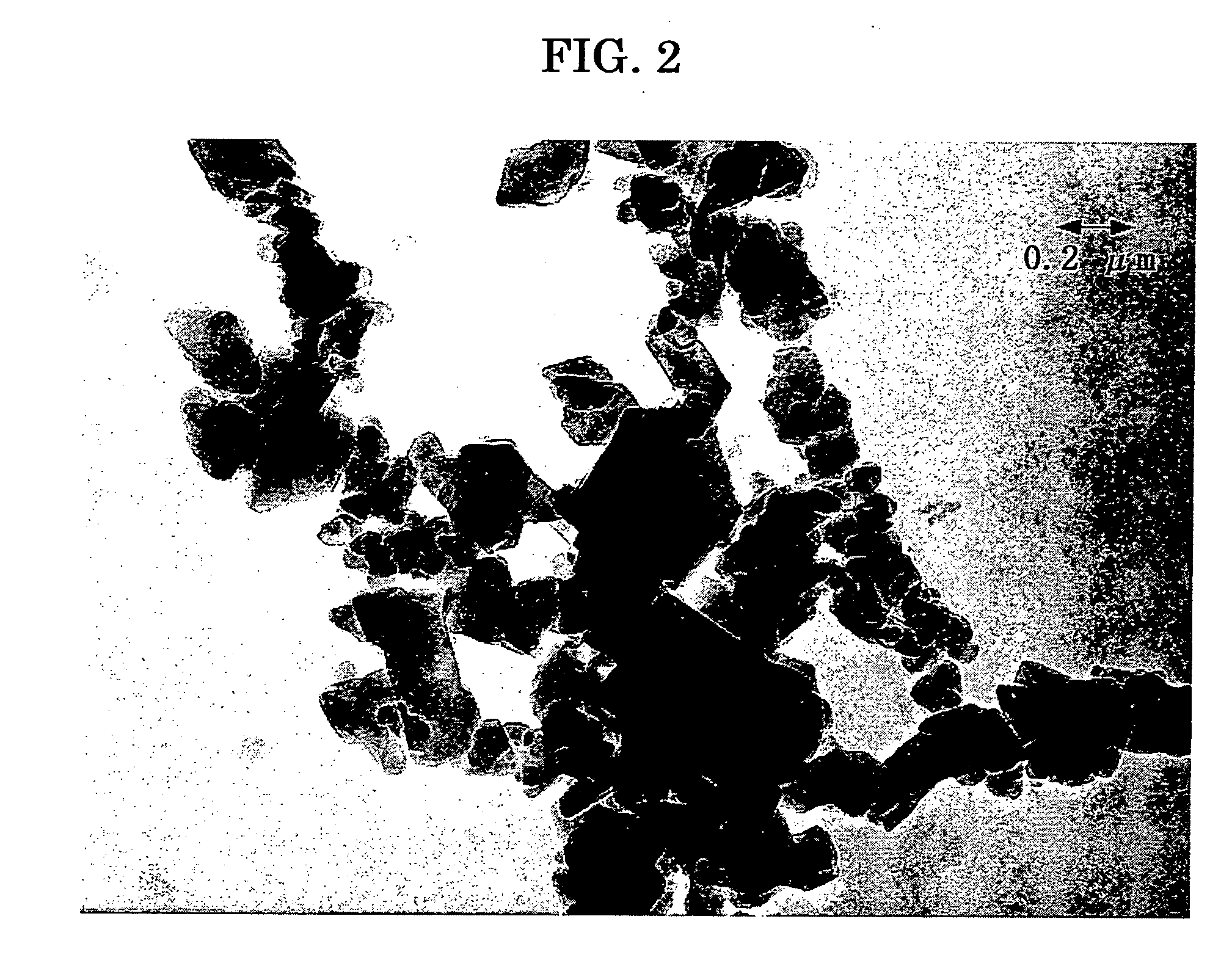Photoconductor, image forming apparatus, image forming process, and process cartridge
a technology of photoconductor and image forming process, which is applied in the field of photoconductor, can solve the problems of titanyl phthalocyanine photoconductors that cannot establish both the higher speed and more compact size of the apparatus, and achieve the effect of stable image quality and high sensitivity
- Summary
- Abstract
- Description
- Claims
- Application Information
AI Technical Summary
Benefits of technology
Problems solved by technology
Method used
Image
Examples
synthetic example 1
Charge Generating Substance
[0357] A titanyl phthalocyanine pigment was synthesized in a form of water paste in the similar Comparative Synthetic Example 1, the product was subjected to crystal transformation in accordance with the following way, to prepare a titanyl phthalocyanine crystal having smaller primary particle size than Comparative Synthetic Example 1.
[0358] To the 60 parts of water paste, obtained in Comparative Synthetic Example 1, prior to the crystal transformation, 400 parts of tetrahydrofuran was added and was stirred vigorously at 2000 rpm by means of Homomixer (Model Mark IIf, by Kenis). The stirring was stopped when the color of the paste turned from dark blue to light blue after 20 minutes from starting the stirring, immediately then the filtering was conducted under a reduced pressure. The crystal obtained on the filter was rinsed with tetrahydrofuran to obtain a wet cake of pigment.
[0359] The wet cake was dried at 70° C. under a reduced pressure of 5 mm Hg f...
preparation example 1
Dispersion
[0374] The pigment 1, prepared in Comparative Synthetic Example 1, was dispersed in the following conditions to prepare a dispersion of coating liquid for charge generating layer.
Pigment of titanyl phthalocyanine (Pigment 1) 15 partsPolyvinyl butyral (BX-1, Sekisui Chemical Co.) 10 parts2-butanone280 parts
[0375] Using a commercially available dispersing apparatus of beads mill type and PSZ balls of 0.5 mm in diameter, the pigment, polyvinyl butyral, and 2-butanone was poured into the dispersing apparatus, and subjected to dispersing for 30 minutes at 1200 rpm of rotor rotating number to prepare a dispersion, which is referred to as dispersion 1.
preparation examples 2 to 9
Dispersion
[0376] Dispersions were prepared in the same manner as Preparation Example 1, except for changing the pigment 1 into the pigments 2 to 9 obtained in Comparative Synthetic Example 2 to 8 and Synthetic Example 1, which are referred to as dispersions 2 to 9 corresponding to the number of pigments.
PUM
 Login to View More
Login to View More Abstract
Description
Claims
Application Information
 Login to View More
Login to View More - R&D
- Intellectual Property
- Life Sciences
- Materials
- Tech Scout
- Unparalleled Data Quality
- Higher Quality Content
- 60% Fewer Hallucinations
Browse by: Latest US Patents, China's latest patents, Technical Efficacy Thesaurus, Application Domain, Technology Topic, Popular Technical Reports.
© 2025 PatSnap. All rights reserved.Legal|Privacy policy|Modern Slavery Act Transparency Statement|Sitemap|About US| Contact US: help@patsnap.com



